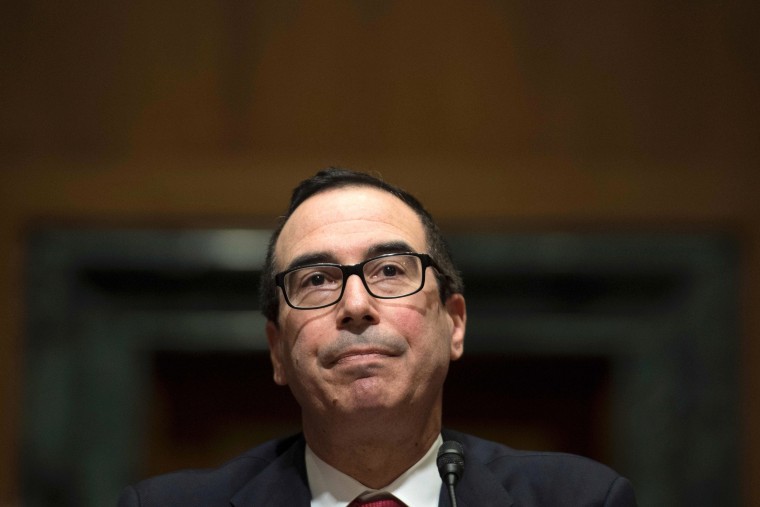Donald Trump promised on the campaign trail to bring tax relief to middle-class families, but economists worry this will come in the form of a huge windfall for big businesses and the richest Americans.
“We don’t really know what the Trump team will propose,” said Gary Hufbauer, senior fellow at the Peterson Institute for International Economics. “It’ll be someplace between Trump’s campaign statements and the Ryan-Brady plan.”
Treasury Secretary and former Goldman Sachs executive Steven Mnuchin said on CNBC Thursday the administration was working on “very significant” tax plans it hoped to have ready by Congress’s August recess.
He said middle-income tax cuts would be a focus, along with lower taxes and fewer regulations on businesses, but provided little in the way of new details or more clarification about what that would look like for the average American taxpayer.
Related: Mnuchin Says to Expect Complete Tax Overhaul by August
“It’s clear that the administration wants to cut taxes across the board — the problem is it doesn't have a convenient way to pay for that,” said Mark Hamrick, senior economic analyst at Bankrate.com.
Many economists were skeptical that Trump’s campaign promises and Congressional ideas about tax reform could coexist, and some worried American consumers and taxpayers would bear the brunt of the impact.
“There’s no way to make the math add up,” said Marshall Steinbaum, senior economist and fellow at the Roosevelt Institute.
Independent analysis, meanwhile, suggests that the richest Americans could be looking at a windfall, with middle-class families lucky to get the amount of a single mortgage payment.
Roberton Williams, senior fellow at the Urban-Brookings Tax Policy Center, called the administration’s current proposals “disproportionately biased towards the wealthy.”
The Center’s research found that the tax plan proposed by House Republicans would give Americans in the middle quintile of the income spectrum about $250 additional in after-tax income, while Trump campaign-era proposals would give this income bracket about an additional $1,000. By contrast, the two plans, respectively, would deliver an extra $212,000 and $215,000 in after-tax income to the richest 1 percent of taxpayers.
No More 'Head of Household'
Some of the most vulnerable Americans would actually be worse off under Trump’s plan, Williams said.
“He would actually raise taxes on a lot of single parents and larger families [by] getting rid of head of household filing status,” he said. “Most people would have to file as single and most would be worse off.”
Some economists say middle class Americans will see a bigger benefit from tax cuts on businesses, which proponents say could boost the fortunes of workers by encouraging investment and increasing business activity.
The big effect for the median household will not come through effects in the personal tax rate,” Hufbauer said. “It will come through cuts in the business tax rates, which will spark investments in the U.S.”
Not everyone is sold on the idea that lower corporate taxes ultimate benefit the middle-class taxpayers Trump courted on the campaign trail, though.
“The rhetoric around this is that corporations will invest and create jobs, but… it’s not extensive tax burdens that’s holding back corporate investment,” Steinbaum said. “There’s just no documented evidence for that stimulative effect of a corporate tax cut.”
